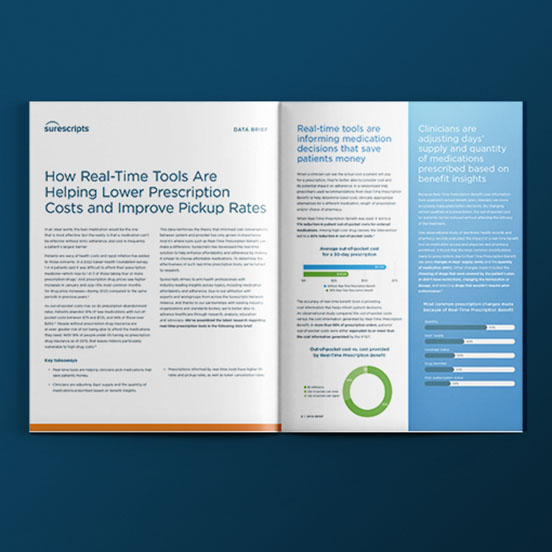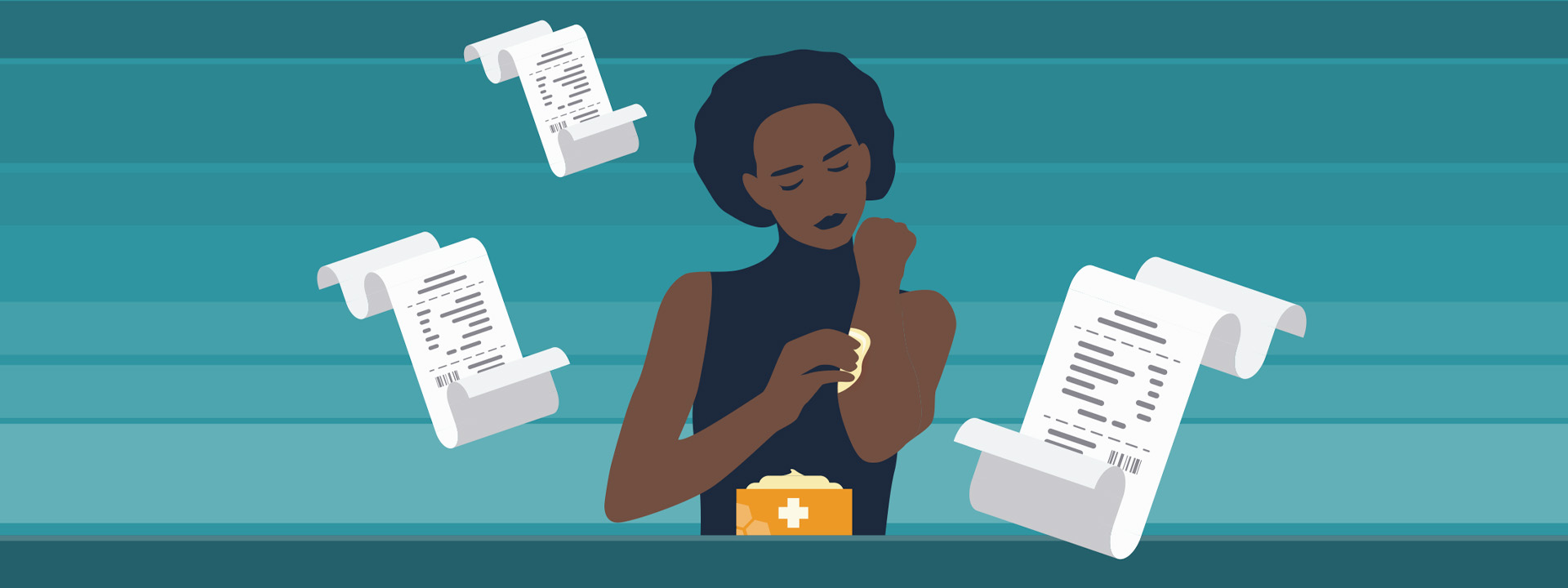Three studies published in the peer-reviewed journals JAMA Internal Medicine, the American Journal of Managed Care and the American Journal of Medicine compare prescriptions informed by Real-Time Prescription Benefit to those that are not.
As the lead analyst of an internal study of our Real-Time Prescription Benefit solution, I analyzed 34.5 million e-prescriptions sent across our network in May 2022. Real-Time Prescription Benefit delivers patient-specific benefit and cost information to providers within their electronic health records (EHRs) and pharmacy software systems, so we wanted to better understand the impact of using this solution to improve medication affordability and first-fill adherence.
Our study found that the overall national pick-up rate for prescriptions informed by Real-Time Prescription Benefit was 73.3% in May 2022, 3.2 percentage points higher than the pick-up rate for prescriptions that were not (70.1%).
I would also like to share the work of other researchers who authored studies assessing the impact of Real-Time Prescription Benefit. These studies report promising and exciting findings that demonstrate and confirm the value of Real-Time Prescription Benefit at the point of care.
Quashed out-of-pocket costs
In a peer-reviewed study, JAMA Internal Medicine found that clinicians using Real-Time Prescription Benefit to find lower cost medications—that were also clinically appropriate—cut patients’ out-of-pocket costs by 11%, and for high-cost medications, by 40%.
Boosted workflow efficiency
In a second peer-reviewed study, the American Journal of Managed Care found improved workflows at one large academic medical center. Armed with patient-specific information from Real-Time Prescription Benefit, clinicians made in-flight changes to days’ supply in 44% of all medication orders in the study—and changes to medication quantity in 69% of orders.
Fewer abandoned prescriptions
In a third peer-reviewed study, the American Journal of Medicine found that for prescriptions informed by Real-Time Prescription Benefit, the fill rate was 8.1% higher and cancellation rate 5.5% lower.
This 2022 Kaiser Health Foundation survey spotlights the cost challenge. Many patients skip doses or cut pills in half because of costs. Or they abandon their prescriptions entirely.
As the studies above suggest, Real-Time Prescription Benefit lowers costs and improves pickup rates, which means that patients get their medications because they can afford to.
Our data brief explores these studies in more detail.

Real-Time Tools Lower Costs & Improve Pickup Rates
Real-Time Prescription Benefit enhances medication affordability and adherence. Three studies in peer-reviewed science journals show how.
With solutions like Real-Time Prescription Benefit, we’re committed to making it simpler to choose more affordable medications, because medication only works if the patient can afford it. Learn more about optimizing affordability and adherence at the point of care.


 Dean Riggott Photography
Surescripts
Dean Riggott Photography
Surescripts





